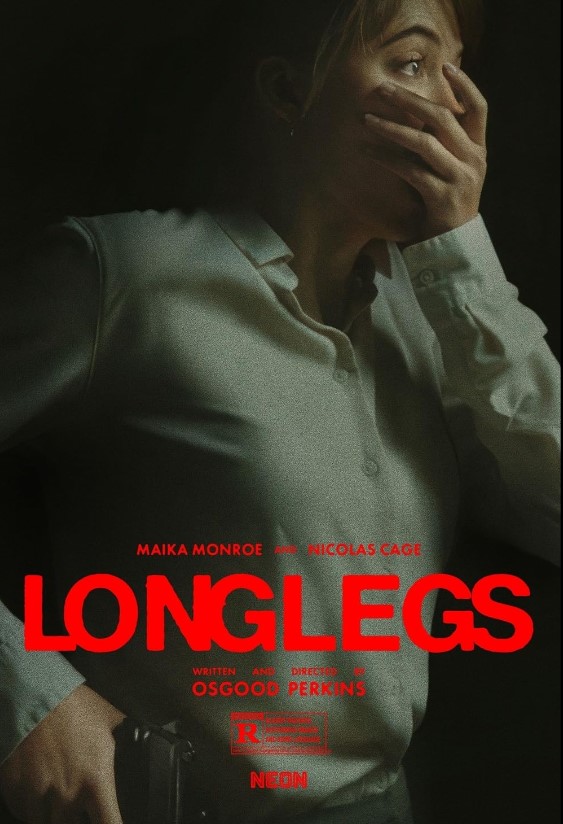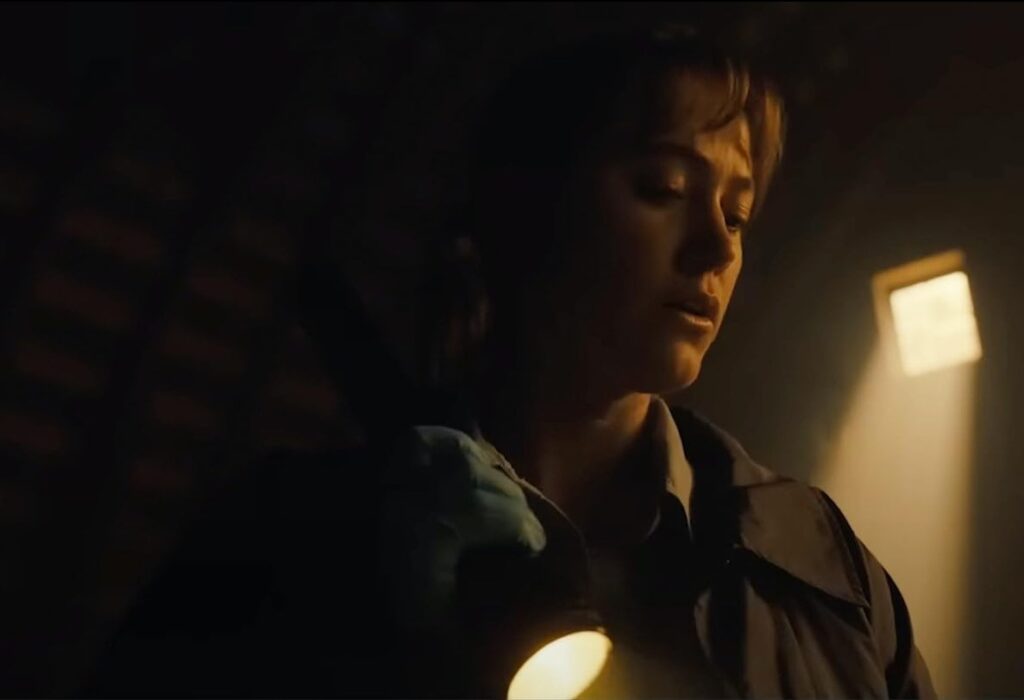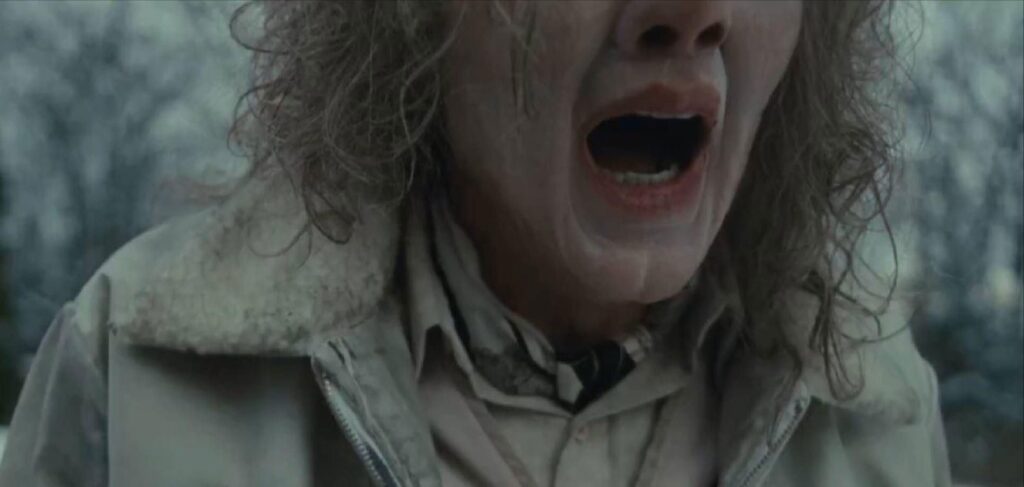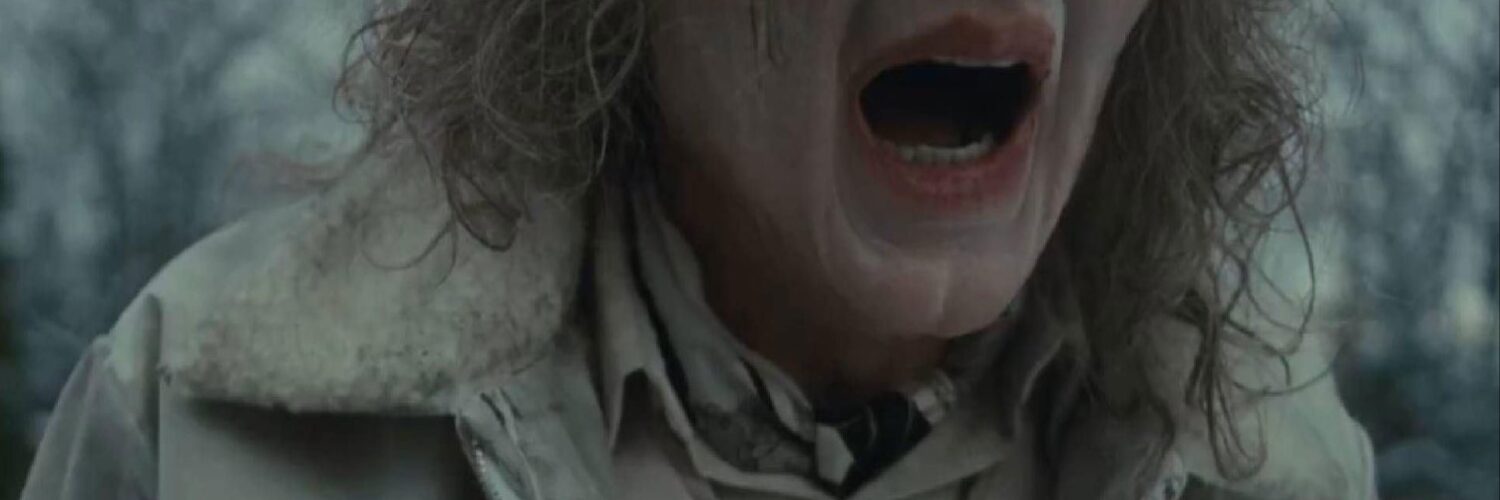
Welcome to Watching the Dark, a regular column featuring essays, articles and reviews about horror films. Written by Terry Morgan.
Longlegs in cinemas
This is the third piece of a three-part series on the work of writer/director Oz Perkins, concluding with a review of his new film, Longlegs, which released on July 12, 2024. It made quite a splash in its opening weekend, garnering record-breaking box office and critical acclaim. On a personal note, it was great to be there on its opening night in a big theater at a sold-out screening with an audience clearly excited to see the film. Often, when a crowd is silent while watching a movie, it might mean that they’re unsatisfied or bored, but here the audience was leaning into it, completely engaged. Perkins has been making unique, brilliant if overlooked horror films for a while now, but with Longlegs, he’s arrived in a big, undeniable way. It’s cleverly written, directed with a mastery of filmmaking craft, and features an assured style that is all his own.

In 1970s Oregon, one day a young girl walks onto the front lawn of her house and is confronted by an odd-looking tall man with a high-pitched voice whom she hasn’t met before. One smash cut to titles later, it’s the 1990s. The girl is now rookie FBI agent Lee Harker (Maika Monroe), who has been assigned to an investigation of a decades-old, ongoing serial killer case. Once a year for more than twenty years, families are found brutally murdered, always by the father of the family. A coded letter is always left behind, with the word LONGLEGS printed at the bottom. No DNA or any proof of any person other than the family members is ever left behind, as if Longlegs (Nicolas Cage) was not present during the murders. When the “half psychic” Lee discovers one of the murders in progress, she is surprised to find a letter from Longlegs waiting for her inside her home. She’s able to decipher the code, and she’s immediately appointed one of the leads on the case. The closer she gets to Longlegs, however, the greater the overwhelming sense of evil surrounding her becomes.
Monroe does a great job as Lee, portraying her as a woman resembling an uncomfortable guest at a party; inward and tense and focused on her work suggesting there is nothing else in her life. Blair Underwood does nice work as her FBI supervisor Agent Carter, getting to demonstrate different sides of his acting talent as his character goes from confidence to deepening alarm as the investigation proceeds. Alicia Witt excels as Lee’s protective and fearful mother, Ruth, concerned if her daughter is still regularly saying her prayers. Kiernan Shipka (star of Perkins’ earlier film, The Blackcoat’s Daughter) has only one scene in this film, but she absolutely kills in that scene, playing the previously catatonic survivor of one the murder scenes with pitch-perfect, spooky assurance. The strength of Cage’s performance as Longlegs is that, although he isn’t actually onscreen very much, he feels as if he’s an unnerving presence all the time. Looking like a malefic Tiny Tim, his face pasty white like an already-dead thing, he uses quirky mannerisms and vocal changes to make it mostly seem as if Longlegs is just an eccentric weirdo, but when he finally gets to explain himself, the sense of the character’s deep delight in satanic evil is palpable.
Perkins’ preference for low light and muted winter colors is on full display here, the seemingly physical manifestation of an existential malignancy smothering the world. His lingering shots of empty rooms or hallways generate an increasing tension in an audience brought up to expect jump scares. The sound design is an expert mixture of white noise, backward music, industrial clattering and barely heard voices, combining with the visuals to create a pervasive sense of dread. The first ten minutes of the film are tight and very effective, throwing us into the deep end almost immediately, which is startling but also exciting.
Perkin’s script is clever and successful in multiple ways, from its deliberate uses of tropes from other films to wrongfoot an audience expecting the familiar to its enigmatic structure that travels back and forth in time as its puzzle is gradually revealed. He can deliver uncanny moments with the best of them, such as an exquisitely eerie reveal of a lifelike doll found in a fetal position in a dark, dusty attic. He also displays a surprising sense of humor that undercuts the horror, especially in a scene in which a teenage clerk in a store isn’t impressed with the oddball Longlegs and yells out, “Dad, that gross guy is back again!”
It’s clear that Oz Perkins has his own distinctive style that has only grown and deepened as he’s made movies such as The Blackcoat’s Daughter and I Am the Pretty Thing that Lives in the House, and Longlegs seems like the work of an artist who’s in full command of his talents. It’s a confident, impressive and aesthetically thrilling film, and I can’t wait to see what he does next.








